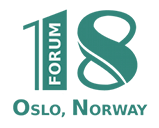The right to believe, to worship and witness
The right to change one’s belief or religion
The right to join together and express one’s belief
CHINA: Xinjiang - Mongolian minority isolated from fellow-Buddhists abroad
While ethnic Mongolian Buddhists in China's Xinjiang-Uighur autonomous region say they can generally practise their faith without serious government pressure, some told Forum 18 News Service in the Bortala-Mongolian autonomous prefecture that maintaining contact with fellow Buddhists abroad is almost impossible. They said all visits by lamas from Mongolia require special permission, while they cannot visit foreign Buddhist centres. They added that portraits of the Tibetan Buddhist spiritual leader, the Dalai Lama, are banned in temples.
Most of Xinjiang's estimated 140,000 ethnic Mongolians are found in the Bortala-Mongolian autonomous prefecture, which borders Kazakhstan. The prefecture's capital Bortala (Bole in Chinese) is 200 kilometres (125 miles) north of Ghulja (Yining in Chinese), capital of the neighbouring Ili-Kazakh autonomous prefecture, and 600 kilometres (375 miles) west of Xinjiang's capital, Urumqi. There are much larger populations of ethnic Mongolians in China's Inner Mongolia autonomous region, which borders Mongolia itself.
The lama of Bortala's Buddhist temple, Suke Oma, told Forum 18 in the town on 5 September that Mongolians make up around 60 per cent of the prefecture's population (the second most numerous national grouping is Han Chinese, followed by ethnic Kazakhs). However, he reported that local Mongolians are heavily assimilated into the Chinese population, with young people preferring to speak to each other in Chinese rather than in Mongolian.
Suke Oma seemed less concerned by restrictions on portraits of the Dalai Lama and on foreign contacts than other local Buddhists Forum 18 spoke to. He reported that the authorities do not obstruct the construction of Buddhist temples, but maintained that as Mongolians are "not particularly devout" the three temples currently functioning locally are "quite sufficient". Even these temples are filled with worshippers only on major festivals, he told Forum 18.
Forum 18 found that the Bortala autonomous prefecture has many holy places connected with paganism rather than with Buddhism. For example, numerous hills made up of piles of stones tower above the mountain Lake Sayram, 80 kilometres (50 miles) south-west of Bortala. Any Mongolian passing one of these holy places has by tradition to stop and place another stone on the pile.
For more background information see Forum 18's Xinjiang religious freedom survey at
http://www.forum18.org/Archive.php?article_id=143
A printer-friendly map of China (including Xinjiang) is available from http://www.nationalgeographic.com/xpeditions/atlas/index.html?Parent=asia&Rootmap=china
Latest Analyses
Latest News
9 September 2004
CHINA: Xinjiang - Security service investigation followed Orthodox priest's deportation
Kazakhstan-based Russian Orthodox priest Fr Vianor Ivanov had visited China's north-western Xinjiang region to serve the local Orthodox who have no priests, but in December 2003 was detained by Chinese customs, was interrogated for a week, had his religious literature confiscated and was deported. "They questioned me for five hours a day. The special services representatives proved to be amazingly well-informed," Fr Ivanov told Forum 18 News Service. Local Orthodox told Forum 18 in Xinjiang in early September that virtually all the Orthodox believers in the city of Ghulja were questioned by the security services about Fr Ivanov's activity. In Ghulja the Orthodox can at least meet for prayers in church without a priest, but in another Xinjiang town, Tacheng, local Russian Orthodox have had no success so far in applying to rebuild their church.
21 July 2004
CHINA: Government blocks religious websites
Chinese web-users are denied access to a range of religious sites based abroad, Forum 18 News Service has found after a two-month survey of how far the Chinese government's Golden Shield firewall, used to censor the internet, affects access to religious websites. Sites blocked include those related to the persecution of Christians and other religious faiths, the Dalai Lama, the Falun Gong religious movement, the Muslim Uygurs of Xinjiang and a number of Catholic sites, including the website of the Hong Kong diocese and the Divine Word Missionaries in Taiwan.
22 June 2004
RUSSIA: One religious policy fits all?
In both Sakhalin and Khabarovsk regions, Forum 18 News Service has observed that the local authorities attempt to translate the publicly expressed religious preferences of Russia's national leadership into concrete policy. Symbolic support for Russia's so-called traditional confessions - Orthodoxy, Islam, Judaism and Buddhism - thus becomes material, even when these faiths have little or no traditional following in much of Far East Siberia. Local public opinion appears to be divided on the desirability of such an approach. Some believe state support for the Orthodox Church to be an essential part of the preservation of Russian national culture. One local Pentecostal, however, asked Forum 18: "Can you imagine - I, an evangelical Christian, or even an atheist, is working and paying taxes to build a new Orthodox church which is going to fight us?"






